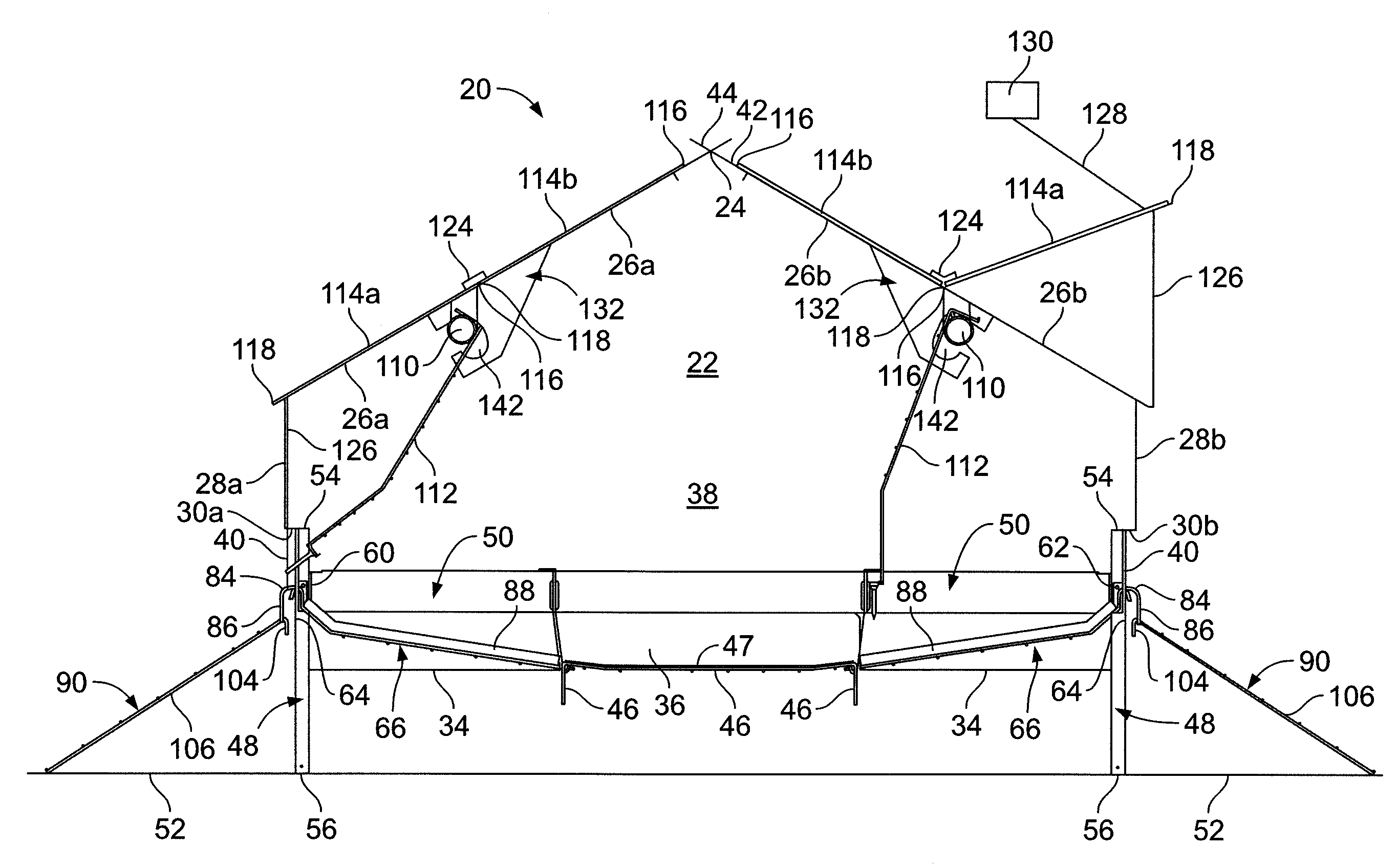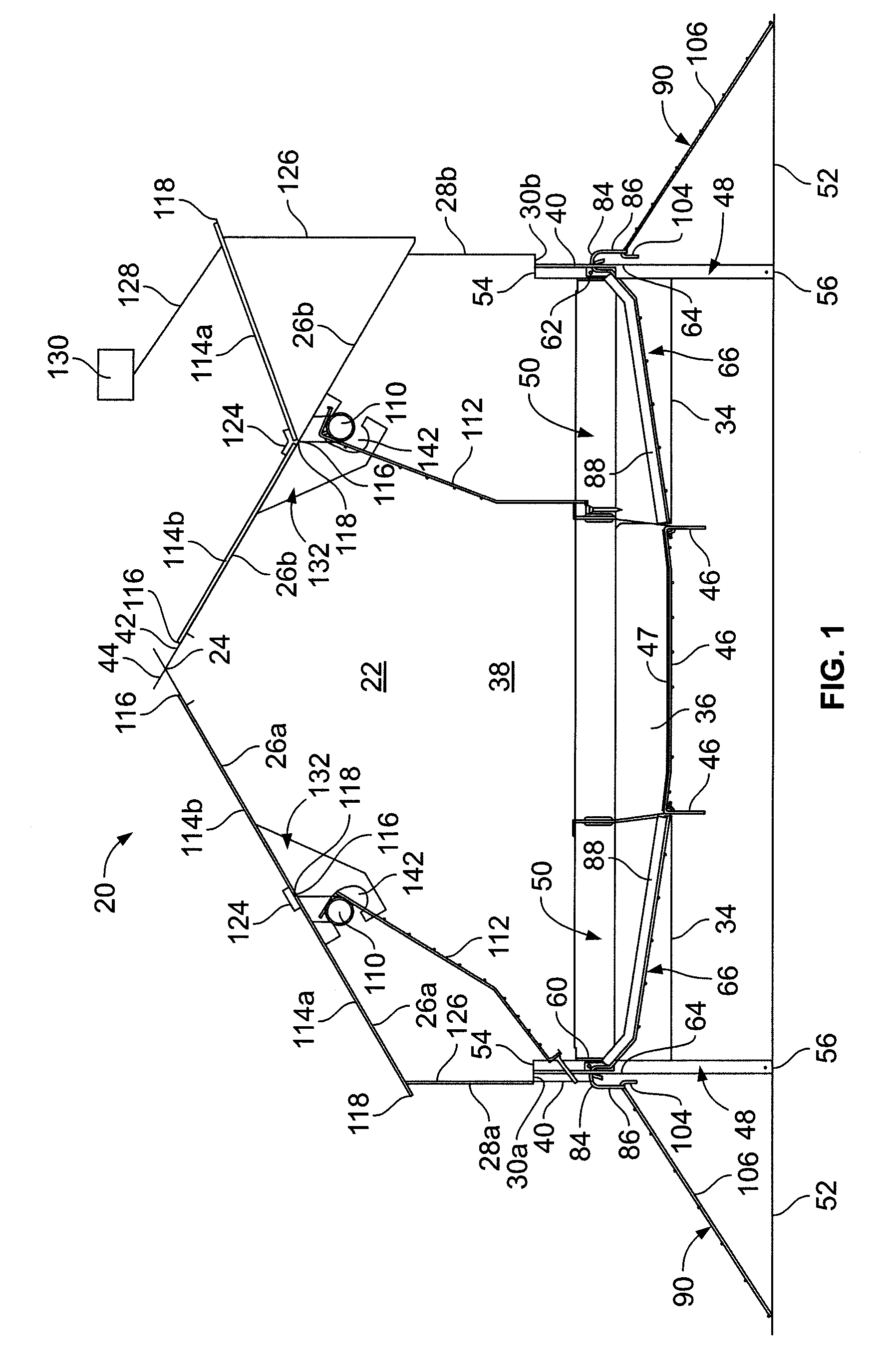Cage free nest
a cage-free, nest technology, applied in the field of cage-free nests, can solve the problems of not providing comfort features for birds, squared edges or become slippery, and the house manager cannot inspect the nest belt, etc., and achieves the effect of minimal build-up of moisture and other materials
- Summary
- Abstract
- Description
- Claims
- Application Information
AI Technical Summary
Benefits of technology
Problems solved by technology
Method used
Image
Examples
Embodiment Construction
[0016]While this invention may be susceptible to embodiment in different forms, there is shown in the drawings and will be described herein in detail, a specific embodiment with the understanding that the present disclosure is to be considered an exemplification of the principles of the invention, and is not intended to limit the invention to that as illustrated and described herein.
[0017]An embodiment of a cage free nest 20 of the present invention is illustrated in FIGS. 1-8 and will be described with reference thereto. The cage free nest 20 is configured to be positioned side-by-side another like cage free nest 20 in order to form a cage free nest assembly (not shown). Such a cage free nest assembly may have a plurality of like cage free nests 20 positioned side-by-side within a poultry house (not shown). Each cage free nest 20 is formed of a pair of sidewalls 22 (only one of which is shown) which are separated from one another by a predetermined distance. Each sidewall 22 has tw...
PUM
 Login to View More
Login to View More Abstract
Description
Claims
Application Information
 Login to View More
Login to View More - R&D
- Intellectual Property
- Life Sciences
- Materials
- Tech Scout
- Unparalleled Data Quality
- Higher Quality Content
- 60% Fewer Hallucinations
Browse by: Latest US Patents, China's latest patents, Technical Efficacy Thesaurus, Application Domain, Technology Topic, Popular Technical Reports.
© 2025 PatSnap. All rights reserved.Legal|Privacy policy|Modern Slavery Act Transparency Statement|Sitemap|About US| Contact US: help@patsnap.com



